Bhutan, the only carbon negative country in the world, was my first travel destination outside India. It was a family trip. I was wondering where to go for our first trip outside India. I chose Bhutan because of two reasons –
- No VISA required to visit Bhutan (For residents of India, Bangladesh and Maldives, no VISA needed to visit Bhutan). Being an Indian citizen, we can reach there without any passport also (all of us don’t have passports), Voter ID was enough to get entry permit.
- It is relatively inexpensive for citizens of India (if travel arrangements are done independently).
This Bhutan travel guide will be more helpful to all those travellers who are planning their first Bhutan trip on their own (not with an authorised travel agent). Citizens of India, Bangladesh and Maldives, have this privilege now. Citizens of all other countries must travel to Bhutan with a government-approved tour operator.
Pin these images to save the link and read the post later!!
About Bhutan
Bhutan, or the “Kingdom of Bhutan”, is a landlocked country in the eastern Himalayas. The country shared a border with India on three sides, and the plateau of Tibet comes to the north. Bhutan is the last remaining Buddhist kingdom in the world.
Buddhism was introduced in Bhutan with the arrival of Guru Rinpoche (Padmasambhava) in the seventh centuries following which many monasteries were established. In 1865 the first Anglo-Bhutan treaty was signed, giving the British permission to use some land in exchange for subsidies. In 1907, another treaty was signed in Punakha Dzong where the British ruled India agreed not to interfere with the internal affairs while Bhutan gives British ruled India the privilege to take care of the external affairs. That legacy continues with Independent India.

The northern part of Bhutan lies in Great Himalayas with high alpine meadows and valleys running down from the glaciers. While the south, east and west part lay in the lower Himalayas with fertile land traversed by glacier-fed rivers and washed with seasonal rainfall perfect for cultivation and inhabitation.
A wide variety of flora is noted in Bhutan, from tropical forest to alpine meadows. Tall, dense grasses with forests similar to the Dooars region in India is noted in the lower reaches. In contrast, pine and oak forests are prevalent in the mid-elevation regions. At higher altitudes, the forests contain a mixture of many species—pine, oak, walnut, rhododendron, ash, poplar, willow, aspen, and magnolia. The magnificent forests containing cypress, fir, spruce and juniper can be seen between 6000 to 9000 feet.
Sambar deers, elephants, rhinoceros, tigers and gaurs are sen in lower altitudes alongside the Manas and Sankosh rivers in eastern and central Bhutan. In addition, there are a few national parks in Bhutan like Jigme Dorji National Park and Royal Manas National Park.
The weather in north Bhutan is dry and cold, perennially covered with snow. While the seasons are well defined, in rest of Bhutan rested on the lower Himalayas. The summers are pleasant, and winters are chilly. Every year, during the monsoon, these regions receive a good amount of rainfall.

Tourist places to see in Bhutan
The tourists’ places in Bhutan can be divided into three regions, e.g., western Bhutan, central Bhutan and eastern Bhutan. Among these three regions, western Bhutan is most frequently visited by travellers. Places like Thimphu, Paro, Punakha and Haa all come in western Bhutan.
- Thimphu
- Paro
- Punakha
- Haa
- Gangtey
- Bumthang
- Trashi Yangtse
- Trashigang
- Gasa
- Phuentsholing
Bhutan tourist map
Thimphu
Thimphu is the capital of Bhutan and the largest city of the country. The ancient capital from Punakha was shifted to Thimphu by Gyalpo Dorji Jygme Wangchuk in 1955. The city spreads across north-south direction along Raidak river known as Wang Chuu in Bhutan. The places to see in Thimphu are –
- Tashicchoe Dzong
- Buddha Dordenma
- Simtokha Dzong
- National Memorial Chorten
- Motithang Takin Preserve
- Clock Tower Square
- Cheri Monastery
- Tango Monastery
- Museums in Thimphu
Read more: Seven Things to See in Thimphu: Capital of Kingdom of Bhutan

Paro
Paro is the 2nd largest city in Bhutan. The only international airport in Bhutan is also located in Paro. Paro Chuu originated from Mount Jomolhari in the north, traverses through the centre of Paro Valley. There are many places to see in Paro, including the famous Tiger’s Nest Monastery, the iconic landmark in Bhutan. Places to see in Paro are –
- Paro Taktsang or Tiger’s Nest Monastery
- Paro Dzong or Rinpung Dzong
- National Museum of Bhutan
- Kyichu Lhakhang
- Tachog Lhakhang
- Drukgyel Dzong
- Dzongdrakha Goemba
Read more: Six Must See Places in Paro, Bhutan
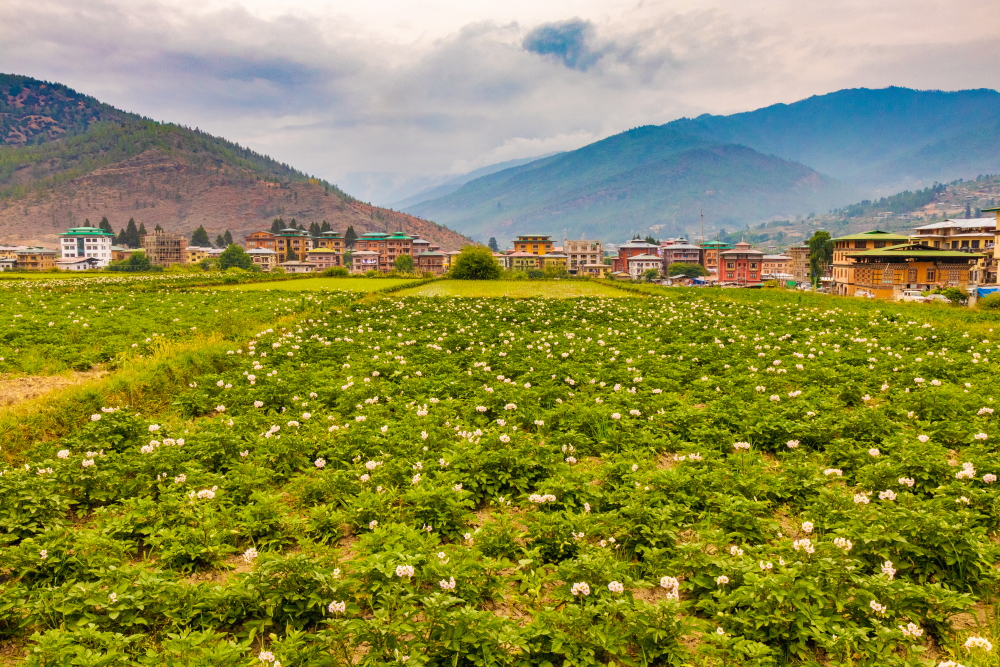
Punakha
Punakha was the old capital of Bhutan. Punakha Dzong, the winter residence of the central monastic body of the country, was constructed by Ngawang Namgyal, 1st Zhabdrung Rinpoche, in 1637–38. In 1907 Punakha Dzong was the site of the coronation of Ugyen Wangchuk, the first king of Bhutan. Three years late, a treaty was signed here between the king and the British Government by which Bhutan was given complete authority on its internal affairs. The places to see in Punakha are –
- Punakha Dzong
- Punakha Suspension Bridge
- Chimi Lhakhang or the Fertility Temple
- Khamsum Yulley Namgyal Chorten
Read More: Punakha Dzong | The Most Picturesque Dzong in Bhutan

Haa
Haa is the westernmost valley in Bhutan. It is connected to Paro Valley by Chele La Pass at 3988 metres in height. Haa valley is bordered by Tibet on the western side. Places to see in Haa Valley are –
- Lhakhang Karpo or White Temple
- Lhakhang Narpo or Black Temple
- Haa Dzong

Gangtey
Gangtey is located in the central part of Bhutan. It is situated in one of the most picturesque valleys in Bhutan called Phobjika Valley. This valley is also winter home to black-necked cranes. Places to see near Gangtey are –
- Phobjika Valley
- Gangtey Monastery
- Kuenzang Chholing Shedra
- Kumbhu Lhakhang
Bumthang
Bumthang is a place of beautiful valleys like Churney, Ura, Choekhor and Tang. Shrouded with the legacy of Guru Padmasambhava, Pema Linga, and other tetrons, Bumthang is literally the true Land of Spirituality in the country. There are many places to see Bumthang, and those are –
- Jakar Dzong
- Jambay Lhakhang
- Wangdue Choeling Palace Museum
- Kurjey Lhakhang
- The Red Panda Brewery
Trashi Yangtse
Trashi Yangtse is the main town of Trashi Yangtse district. This town is a true mix of different ethnic groups and different culture. The locals of Trashi Yangtse are also skilled woodworkers. Tourists can spot wood and paper factories here. Places to see in Trashi Yangtse are –
- Zorig Chusum
- Bomdeling Wildlife Sanctuary
- Chorten Kora
- Rigsun Gonpa
Trashigang
Trashigang is the largest district in Bhutan and forms the major part of eastern Bhutan. Trashigang is the truly “Jewel of the East” with its charming beauty and vibrant trade centre. The most attractive places in Trashigang are –
- Trashigang Dzong
- Gomphu Kora
- Sakteng
- Merak Valley

Gasa
Gasa is the least populated district in Bhutan. It is located in higher altitudes with places like Laya which can be only accessed by hiking. Gasa is home to many Himalayan peaks, glacial lakes, verdant greeneries and unique wilderness. Places to see in Gasa are –
- Gasa Dzong
- Laya village
- Gasa Hot Springs
- Numerous Hiking Trails
Phuentsholing
Phuentsholing will be your first stop if you enter Bhutan through the Jaigaon border in the Alipurduar district in West Bengal. Phuentsholing is the adjacent town of Jaigaon. You have to process your entry permit in Phuentsholing Immigration Office. While getting your permits done, you can visit some beautiful places in Phuentsholing in a couple of hours before proceeding towards Thimphu. These are –
- Zangto Pelri Lhakhang
- Karbandi Monastery
- Palden Tashi Chholing Shedra
- Amo Chhu Crocodile Breeding Centre
- Phuentsholing View Point
- Bhutan Gate

Bhutan tour itinerary
Bhutan tourists places can be divided into three zones – western Bhutan, central Bhutan and eastern Bhutan. Western Bhutan is what most tourists visit and is recommended if you have 1 week in your hand. If you can spend a few more days, then include central Bhutan, while a week more can let you travel to eastern Bhutan.
5N/6D itinerary
Thimphu(2N), Punakha(1N), Paro(2N)
7N/8D itinerary
Thimphu(3N), Punakha(1N), Paro (3N)
9N/10D itinerary
Thimphu(3N), Punakha(1N), Gangtey(1N), Paro (3N), Haa(1N)
10N/11D itinerary
Thimphu(3N), Punakha (1N), Gangtey(1N), Bumthang(2N), Paro(3N)
14N/15D itinerary
Paro(3N), Thimphu(3N), Punakha(1N), Gangtey(1N), Bumthang(3N), Tashi Yangtse(2N), Trashigang (2N)
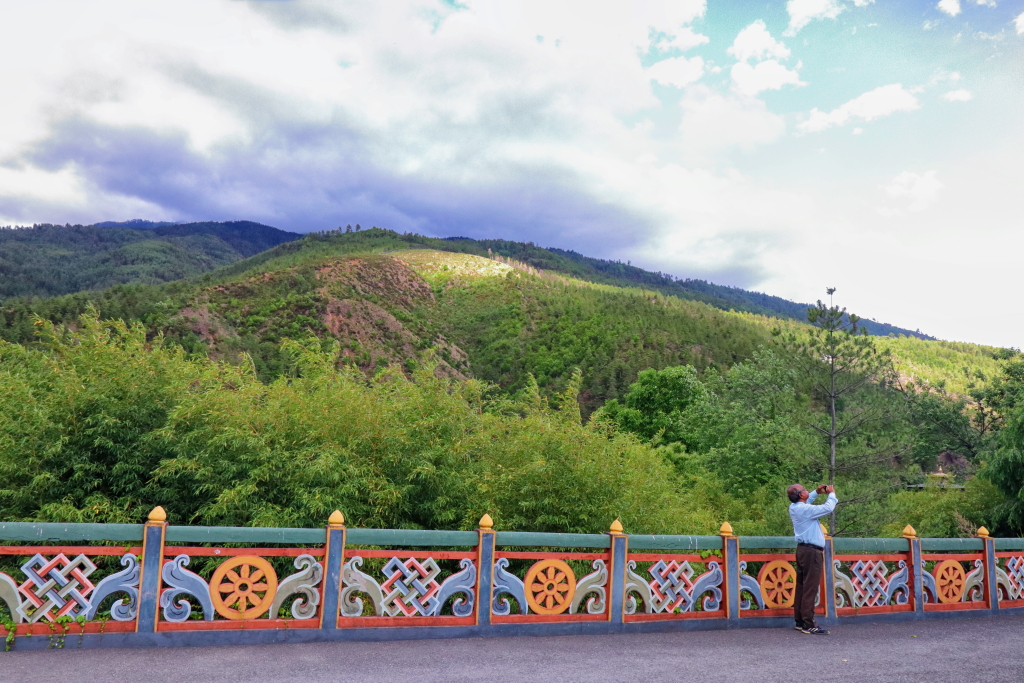
How to get VISA/Permit for Bhutan
We did our permit from Phuentsholing Immigration Office. Residents of India, Bangladesh and Maldives, can obtain a VISA on arrival/permit at the port of entry on producing a passport with a minimum of 6 months validity left.
Indian nationals can also use their Voter Identity Card (VIC) or birth certificates for infants and children to get an entry permit.
Tourists from all other countries must obtain a visa clearance prior the travel to Bhutan. Visas are processed through an online system by your licensed Bhutanese tour operator directly or through a foreign travel agent.
Read More: The Ultimate Guide to Hike Taktsang (Tiger’s Nest) Monastery in Paro, Bhutan

You have to send the photo-page of your passport to your tour operator who will then apply for your visa. The visa will be processed by the Tourism Council of Bhutan (TCB) once the full payment of your holiday (including visa fee) has been wire transferred and received in the TCB bank account. Once received, the visa clearance will be processed within 72 working hours. At your point of entry you will be required to show your visa clearance letter, the visa will then be stamped into your passport.
https://www.mfa.gov.bt/?page_id=220
https://www.mfa.gov.bt/wp-content/uploads/2014/07/bhutan-visa-application-form.pdf
For an Indian national who want to travel independently without a registered Bhutan tour operator, you need to remember that you will get a permit only for initial 7 days and that too for Thimphu and Paro only. So for extension of permit beyond 7 days and for a restricted area permit (for places other than Phuentsholing/Thimphu/Paro), one has to visit the immigration office in Thimphu in weekdays.

Documents required for permit at port of entry are –
- Filled up application form
- Photocopy with original Passport with at least 6 months validity left / Voter ID card / Birth Certificate for infants and children
- Photocopy of Booking slip of hotel for your 1st-night stay in Bhutan
- Two passport size colour photos
For extension of permit / restricted area permit, one needs to produce a photocopy of the initial permit with one passport size photo. When applying for extension/restriction area permit you must go to Thimphu Immigration office yourself, while your tour guide/ car driver can collect it for you after 1-2 hours.
As of now, Bhutan High Commission’s office in Delhi or Kolkata Bhutan Consulate office does not issue any permit. Permit can be only obtained from Immigration offices in Indo-Bhutan border (Phuentsholing, Gelephu, Samdrup Jonkhar) or in Paro airport (only international airport in Bhutan).
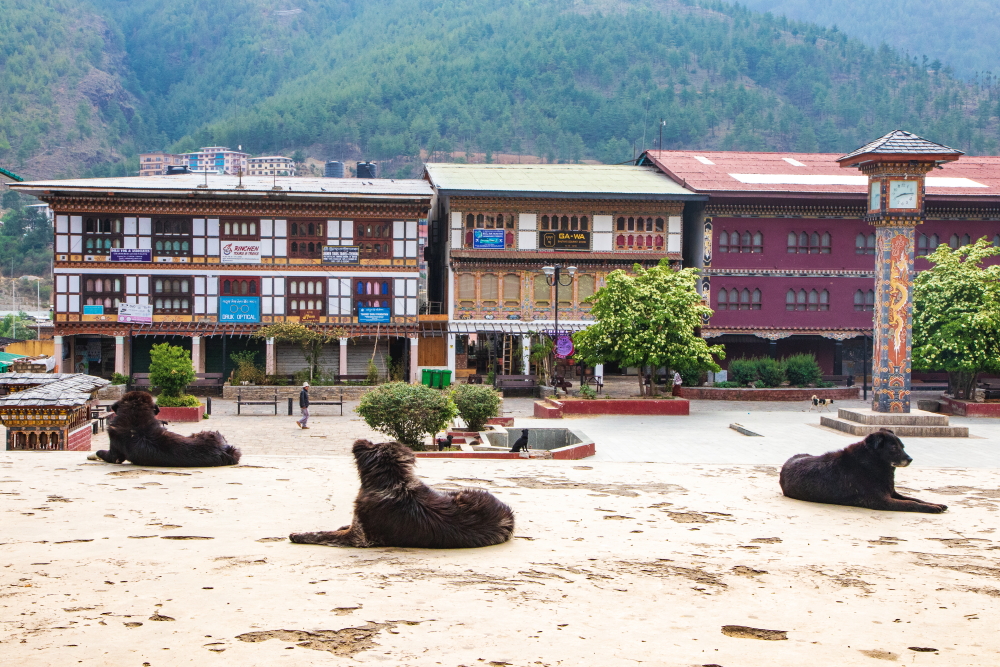
Immigration/Permit Office Timings
All working days (Monday to Friday) from 9:00 AM to 5:00 PM Bhutan Standard Time (9:30 AM to 5:30 PM IST). Please check for Bhutan Public Holidays in advance as both Thimphu and Phuentsholing Permit Office remains closed on Bhutan Public Holidays. Lunch hour is from 1 PM – 2 PM BST.
People travelling by flight to Paro can get entry permit in all 7 days/ Holidays.
Permit fee for Citizens of India
There is no fee for an initial permit. For extension/restricted area permit also, no fee is needed. A bill is passed in the lower house regarding the payment of a daily minimum fee by Indian tourists, called Sustainable Development Fee (SDF), for travelling in Bhutan. The charge will be ₹1200/day/person. For children between 6 years to 12 years, this fee will be ₹600/day/child.
However, the fee for Indian passport holders will be much less than the citizens of other countries, who have to pay $65 included in the compulsory flat cover charge of $250 per day (months of March, April, May, September, October, and November) or $200 per day (months of January, February, June, July, August, and December) and the VISA fee of $40.

How to enter Bhutan
I had entered Bhutan by road from Phuentsholing, a border town adjacent to Jaigaon in West Bengal. Jaigaon is around 150 km from Siliguri. I reached Siliguri by flight from Kolkata to Bagdogra. It takes around 4 hours by road to reach Jaigaon from Siliguri. So if you are keen to enter Bhutan from Phuentsholing on the same day then an early morning flight to Bagdogra is a must.
Travellers who want to reach by rail, an overnight train from Kolkata to Hasimara (13149 Kanchankanya Express, SDAH to HSA) is the best option.
Bhutan Airlines and Druk Air operate all flights to Paro, the only International airport of Bhutan. There are direct flights from Kolkata, Bagdogra, Guwahati, Gaya, Delhi and Mumbai. You must buy your flight tickets 4-5 months in advance if you are planning to visit Bhutan in peak season.

Transport inside Bhutan
Buses/ shared taxis are available to move between Phuentsholing/ Thimphu/ Paro/ Punakha. But for other places, public transport is very limited and time-consuming as well. To travel central and eastern Bhutan, you should hire a car.
You can drive your own vehicle from India also. Along with your driving license, carry all relevant vehicle documents (RC book, pollution certificate, Insurance copy in original). You have to process your car permit in RSTA office after you get your entry permit at Phuentsholing Immigration Office. Remember the owner of the car and driver must be the same person or else an authorization letter is needed.
There is a nominal fee for car permit. You have to get an extension or a restricted area permit for your car too, just the way you need it for yourself. RSTA office in Thimphu is in bus stand while the Immigration office is in Norzin Lam.
Be careful with the rules: drive below 50 Kmph and no honking. Give way to the pedestrians while they are crossing the road.

Best time to visit Bhutan
I went there at the end of May. It was almost the end of peak season. We spent two and a half hours in Phuentsholing immigration office to get our permit. During peak season, people started to make a queue outside the Immigration Office from 7 a.m. while the office opens at 9 a.m. You can ask your car rental agency to help you in processing your permit.
September/October/November and March/April/May are the peak tourist seasons in Bhutan. So one has to book hotels 2-3 months advance if planning to travel during this time. Expect long queue and long waiting time to get your permit in Phuentsholing immigration office during high season.
While planning your trip keep an eye on dates of major festivals in Bhutan. If you are traveling in April fix your itinerary around Paro Tshechu.
In the month of May, full-bloomed Jacaranda trees around Punakha Dzong become a treat to eyes.
If traveling in September/October plan your trip around Black Necked Crane Festival in Phobjikha valley or Thimphu Tshehcu that occurs in end of September.

How to make payments
Official currency of Kingdom of Bhutan is Ngultrum (Nu.) and is at par with Indian Currency. All new currency notes of India including 500 and 2000 are accepted in Bhutan. The balance change given to you will be in Bhutanese Currency. So please remember to exchange all Bhutanese Ngultrum with Indian Rupee before leaving Bhutan.
I did not use my ATM card or credit card in Bhutan. Bank of Bhutan (BoB), Bhutan National Bank and Druk PNB Bank ATMs accept some foreign credit cards, but ATMs in Bhutan use the magnetic strip rather than digital chips, and some foreign banks do not permit withdrawals via this method. Credit Cards are accepted at major handicraft stores and some of the larger hotels in Thimphu and other towns, but you will often be charged a surcharge of up to 5% to cover the fee levied by the credit card companies.

I used cash for all transactions including my car rental. My hotel booking was prepaid. There are ATMs of all major Indian banks in Jaigaon. But often ATMs lack cash during peak season due to high demand. So try to carry the maximum amount of cash from your home town, the major amount should be in low denominations.
How to stay connected
There are two major mobile network providers in Bhutan – B Mobile (by Bhutan Telecom) and Tashi Cell. Both of them have 4G data packages, I used B Mobile sim which I bought from Phuentsholing immigration office after I got my permit. Bhutan has very good mobile connectivity in all places I went. Free Wi-Fi is available in all 3 star and above hotels.

Where to Stay
I booked my hotels through online hotel booking portals almost 3 months back and got reasonable deals. For peak tourist season I will recommend 2 months advance hotel booking. For other times advance hotel booking is not necessary except for the first night (as that booking voucher/slip is needed to get an entry permit).
There are many good hotels in Thimphu and Paro for both budget/luxury travellers. For your visit to Punakha, budget stay options are available in Khuruthang/Wangdue, and one can expect spot availability except for peak season. For Haa, I will recommend advance booking in all seasons as hotels are limited there.

What to eat
Bhutanese cuisine has three common ingredients – chillies, potatoes and cheese. Red Rice is their staple food. You can try Red Rice with Ema Datshi, Shamu Datshi or Khewa Datshi. Suja is Bhutanese butter tea which is also worth trying.
Indian and western food is also available in places like Thimphu, Paro and Punakha. There are many small and beautiful cafes in Thimphu and Paro. A visit to these cafes will make your evenings more lively. For all non vegetarians, remember fish and meat are available in places like Thimphu/Paro. But majority are transported from India as animal killing is not allowed in Bhutan.

What to wear
People of Bhutan dress in their traditional outfit most of the time. You can see men wearing Gho and women wearing Kira on all formal occasions and places like government office, temples, Dzongs, monasteries etc.
Tourists should follow some clothing etiquette in Bhutan. When you enter Dzongs you should wear full covered clothes. Sleeveless tops, shorts aren’t allowed in these places. When you wear sleeveless, the easiest option is to always carry a jacket or shrug and just wear it when needed.

What to pack
Carry light woollens in summer, particularly for children and the elderly. For winter, heavy woollens are a must. A pair of hiking shoes will be beneficial at times, particularly during the hike to Tiger’s nest. Carry a raincoat if you have children with you and one/two umbrellas because it can rain anytime in Bhutan.
Winter Wear:
- Thermal innerwear – 2 long-sleeved
- Woollen sweater
- Shawl/scarf
- Down jacket with hood
- Waterproof jacket
- Raincoat
Bottoms:
- Jeans
- 1 pair hiking trousers
- 1 pair casual shorts
Shoes:
- Hiking boots
- Casual sandal / flip-flop – 1 pair
Warm accessories:
- Woollen hat
- Woollen socks
- Gloves (optional)
Daily essentials:
- Sunscreen lotion (max. SPF)
- Lip balm
- Moisturiser
- Toiletries – Toothbrush, toothpaste, shampoo bar, conditioner bar, Deodrant, hairbrush, laundry detergent, menstrual cup.
- Hand sanitiser
- Sunglasses
- Umbrella
First-aid box:
- 3-4 Band-aid
- Bandage and plaster
- Analgesic ointment or spray
- Analgesic tablets – paracetamol and ibuprofen
- Diarrhoea pills
- ORS powder
- Antacids and antiemetics
- Any chronic medications
Travel gears:
- Mobile phone
- Powerbank for phone
- Camera and accessories like battery charger, memory cards, tripod, added lens and cleaning kit.
- Travel adapter
- Headphones
Few extras:
- Trekking poles (can rent also)
- Reusable water bottle
- Lifestraw filtration device
- Collapsible cup
- A book to read
- Small notebook
Documents:
- Passport (at least 6-month validity left)
- Voter ID
- Booking slip of hotels at least 1st night
- Airline tickets
- Tour agency / Car driver contact number
- Travel insurance
- Credit card
- Cash
- Emergency contact numbers, written on paper and made photocopies
Read More: 30 Best Photos of Bhutan That Will Inspire You to Visit The Country

Where to shop
Thimphu and Paro are the best places for shopping. Look for colourful masks, prayer flags, exquisite Kiras, woven bags, stoles, yak bone jewellery and traditional handicrafts. Norzin lam in Thimphu is a street filled with shops and eateries.
Paro market is also very popular for shopping. Thimphu is a bit expensive than Paro. I had left my shopping for my last day in Paro. So, technically I had to carry that extra luggage for one day only.
Remember Bhutanese people don’t like bargaining. It is generally considered a bad practice to bargain in Bhutan.

Keep an eye on your watch
Bhutan is ahead of India by 30 minutes. It is GMT + 6 hours, which is 30 minutes ahead of Indian standard time. Once you enter Bhutan everything will work in Bhutan timezone. Smartphones these days automatically adjust to the local timezone, hence it is sorted. But do not forget to change the time in your watch.
Read more: Pangri Zampa Monastery in Thimphu, Bhutan

Medical Aid
Bhutan has a universal health care facility for all citizens. There is no private clinic or hospital in Bhutan. Every Dzongkhags except Gasa has one district hospital in its territory. The best referral hospital in Thimphu, Jigme Dorji Wangchuk National Referral Hospital. Apart from citizens of Bhutan, tourists can also avail free basic medical treatment and advanced services such as surgical and emergency treatment. There are general practitioners, several specialists, labs, operating rooms, and CT and MRI diagnosis equipment.
Expatriates and tourists should have travel insurance covering international health insurance with a medical evacuation facility in serious illness or injury. Apart from the few and far health facilities outside the capital, the treatment standards are not par with the European and American standards.
Please do carry your own medications in sufficient quantities. You may not get them in Bhutan if needed. Medications for common problems like travellers diarrhoea, muscle sprain, small cut and tears, cough and cold should be in your first aid box. High altitude hikers and mountaineers should carry medications for acute mountain sickness.

Quick tips
- Plan your itinerary in a way so that you need not hurry. Start your trip early/mid-week if you are travelling by road. Do remember Immigration offices get closed on Saturday/Sunday/Public Holidays.
- Book your accommodation and car a few months in advance if you are travelling during peak season.
- Double-check all documents (original/photocopy) before leaving your house. Download the immigration form and restricted area permit form and fill it up before reaching the immigration office (http://www.mohca.gov.bt/?page_id=336).
- If you still have missed your Passport/ Voter ID, visit the Indian Consulate Office in Phuentsholing and apply for an “identification slip” with proper proof of Indian nationality.
- As soon as you get the entry permit, do few photocopies. Then collect your mobile sim and buy a data package.
- Please do remember, in between Thimphu sightseeing, you have to go to the Thimphu immigration office to apply for a restricted area permit. Always carry your entry permit with you.
- Extend your permit at least 1/2 days before the expiry date as mentioned in the entry permit. Do remember it can only be done from the Thimphu Immigration office. Keep in mind about working days/timings of the Immigration office.
- If you hire an Indian car, your car and driver also need to process the permit the same way as you. Always talk to your tour agency/ local driver about it. Usually, they take care of it.
- Adjust your watch as soon as you enter Bhutan. Check timings of local Dzongs/ museums/ monuments. Check online and also from your driver and locals.
- Do not shout inside Dzongs/ gompas. Wear full covered clothes while entering Dzongs/ gompas.
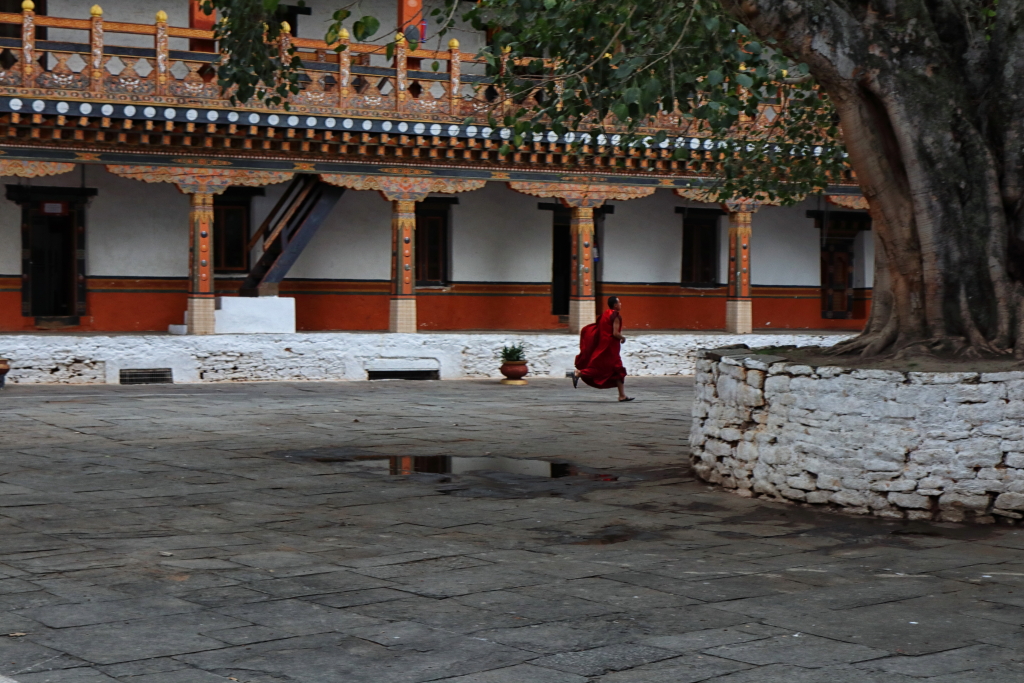
Frequently asked questions (FAQs)
Is Bhutan safe for tourists?
Bhutan is absolutely safe for tourists.
What is the VISA or entry permit cost for Indians?
There is no VISA fee or entry permit fee for Indian citizens.
Is there any other charge to travel to Bhutan?
No, until now. But it can be levied in the near future. A bill has passed in the lower house in Bhutan that Indian tourists need to deposit a fee of ₹1200/day/person payable as Sustainable Development Fee. The amount will be ₹600/day/child for children between 6 years and 12 years,
Is PAN Card or Aadhar Card a valid document to issue an entry permit for Bhutan?
No, PAN Card and Aadhar Card are not valid documents to issue an entry permit for Bhutan. You must have a valid Indian Passport or a Voter ID Card with you. For infants and children, an original birth certificate will suffice.
For how many days a permit is issued to an Indian traveller?
An initial permit is issued for 7 days regardless of your trip duration. To stay beyond 7 days, you have to increase the permitted limit from the Thimphu Immigration Office. And, remember, you have to enhance the limit every 7 days up to a maximum of 30 days.
Can Indian visit Bhutan without a guide?
Indians do not need a local guide to visit Bhutan.
Is Indian currency accepted in Bhutan?
Indian currency is freely accepted in every corner of Bhutan. It is better to take lower denomination currencies to make your life easier and get a change everywhere. The new 2000 rupee note is acceptable in Bhutan.
Does Indian SIM cards work in Bhutan?
Airtel and Vodafone prepaid SIM cards work in Bhutan with international roaming charges. So, it is better to buy a local SIM card of B Mobile (by Bhutan Telecom) or Tashi Air with 3G connectivity and use it for 1 month (maximum validity). A 200 rupees data pack is enough for all the necessary phone calls and internet usage (including Google Map) for 7 days.
Is vegetarian food available in Bhutan?
Yes, vegetarian food is available everywhere in Bhutan. You will get vegetarian-only restaurants in Thimphu and Paro, but there are no veg-only restaurants available for other places.
Is drinking alcohol is allowed in Bhutan?
Yes, it is allowed in Bhutan. You can drink alcohol in bars, pubs and restaurants but not in public places. Do not forget to taste the local beers in Bhutan.
Is smoking allowed in Bhutan?
Bhutan is the only country in world where production and sale of tobacco is banned. Legally you can not smoke in Bhutan. However, you can take a certain number of cigarette packets while entering Bhutan and can smoke only inside your hotel with permission. There are also smoking room facilities ina few bars in Thimphu.
What else is banned in Bhutan?
Apart from tobacco, production, sale and use of plastic are strictly banned in Bhutan.
If you have any more question feel free to ask. Suggest me whether I should add anything else to make this article more helpful to you. Also, share your experience about your trip to Bhutan in the comment section below.
Pin it!!
Book your trip: Resources
- Flight
Use Skyscanner or Google Flights to book your flight.
- Accommodation
Tripadvisor and Agoda are perfect for booking your hotel. If you want to stay in a hostel, then Hostelworld would greatly help you find one at your convenience.
- Travel Insurance
World Nomads is perfect for travel insurance. You can get comprehensive protection from them. Let them take care of unexpected situations while you concentrate on your trip.
- Package Tour and Activities
You can book a package tour from G-Adventures and Viator. They are a reputed company arranging small group tours and customising them per your requirements. You can also use Get Your Guide to book your private transport, city tours, heritage walks, food walks and other experiences like a cooking lesson or a Yoga session.
Disclosure: Some of the links below are affiliate links. You will be directed to another third-party website when you click those links. If you purchase anything via those links, I will earn a referral bonus without any extra cost to you.

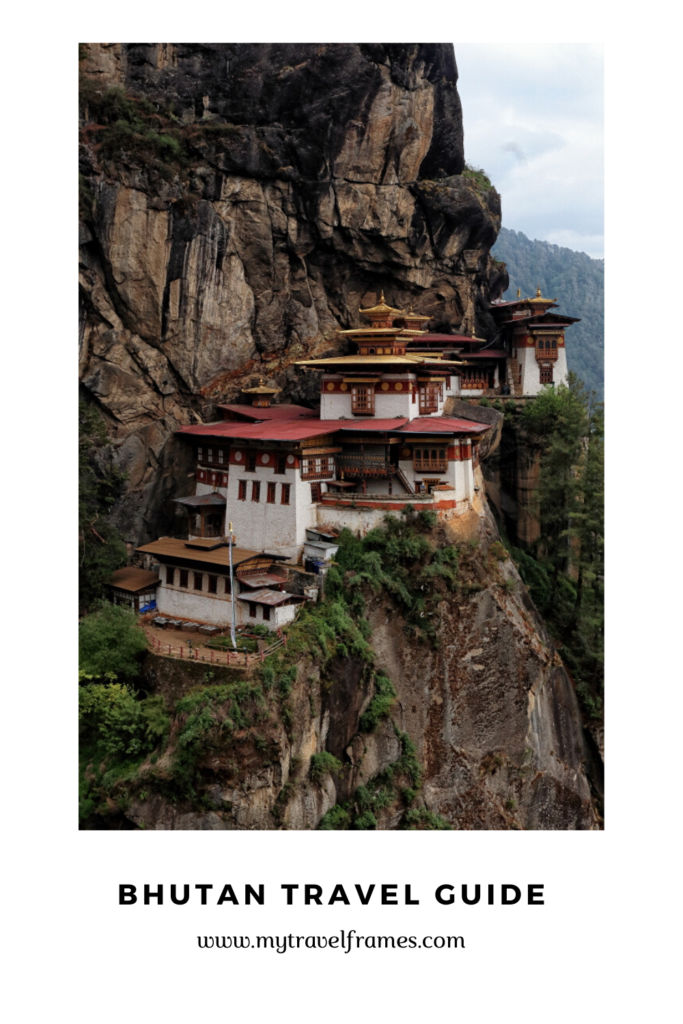
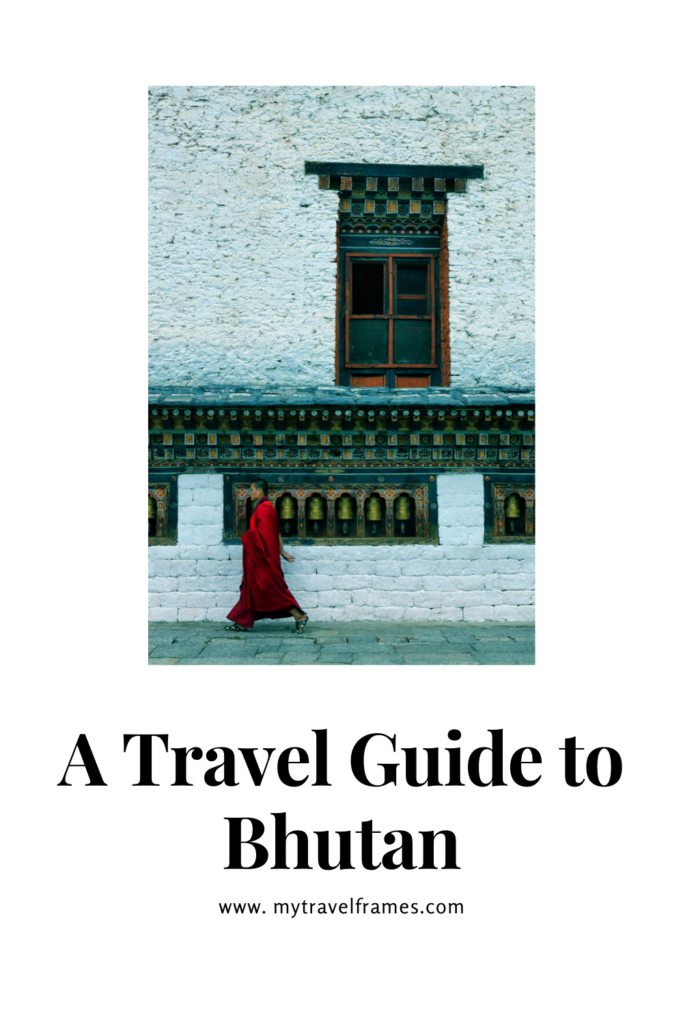
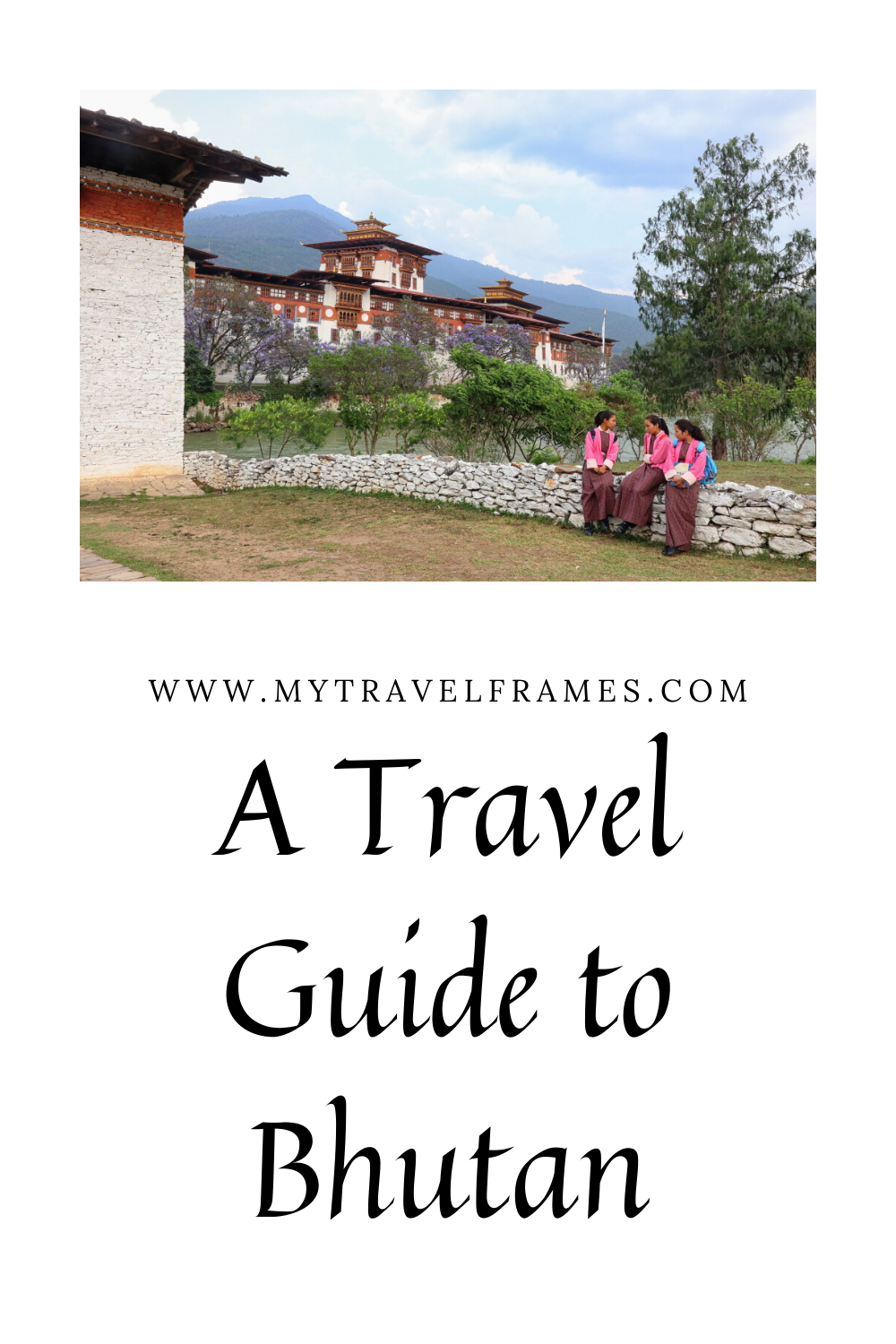
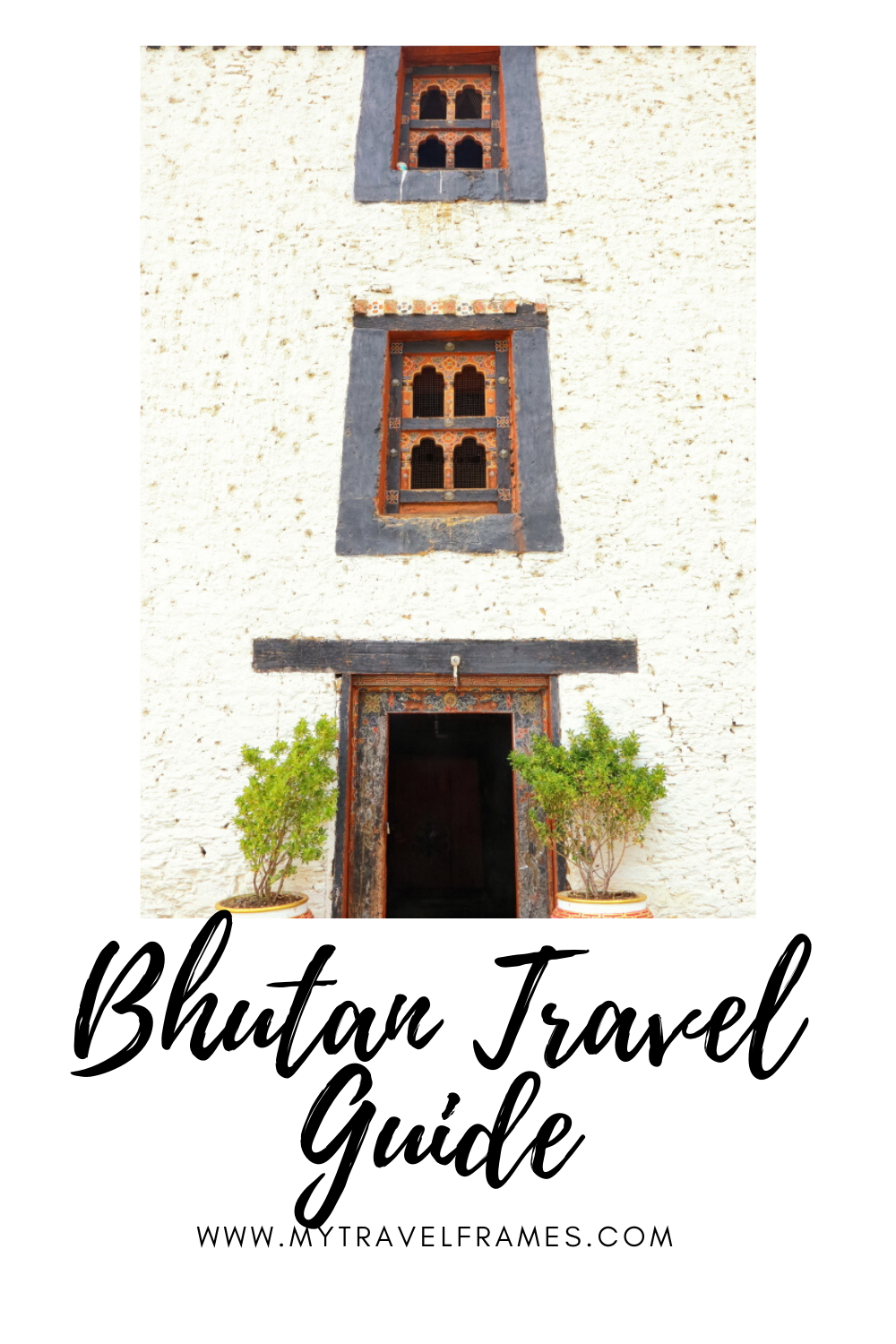
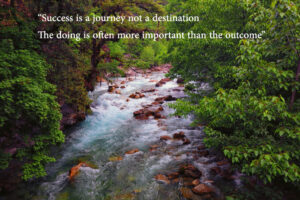
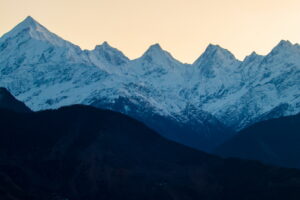
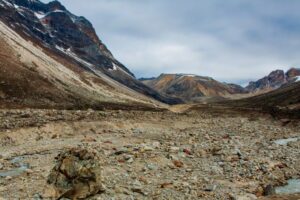
Nice and useful post author. Thank you.